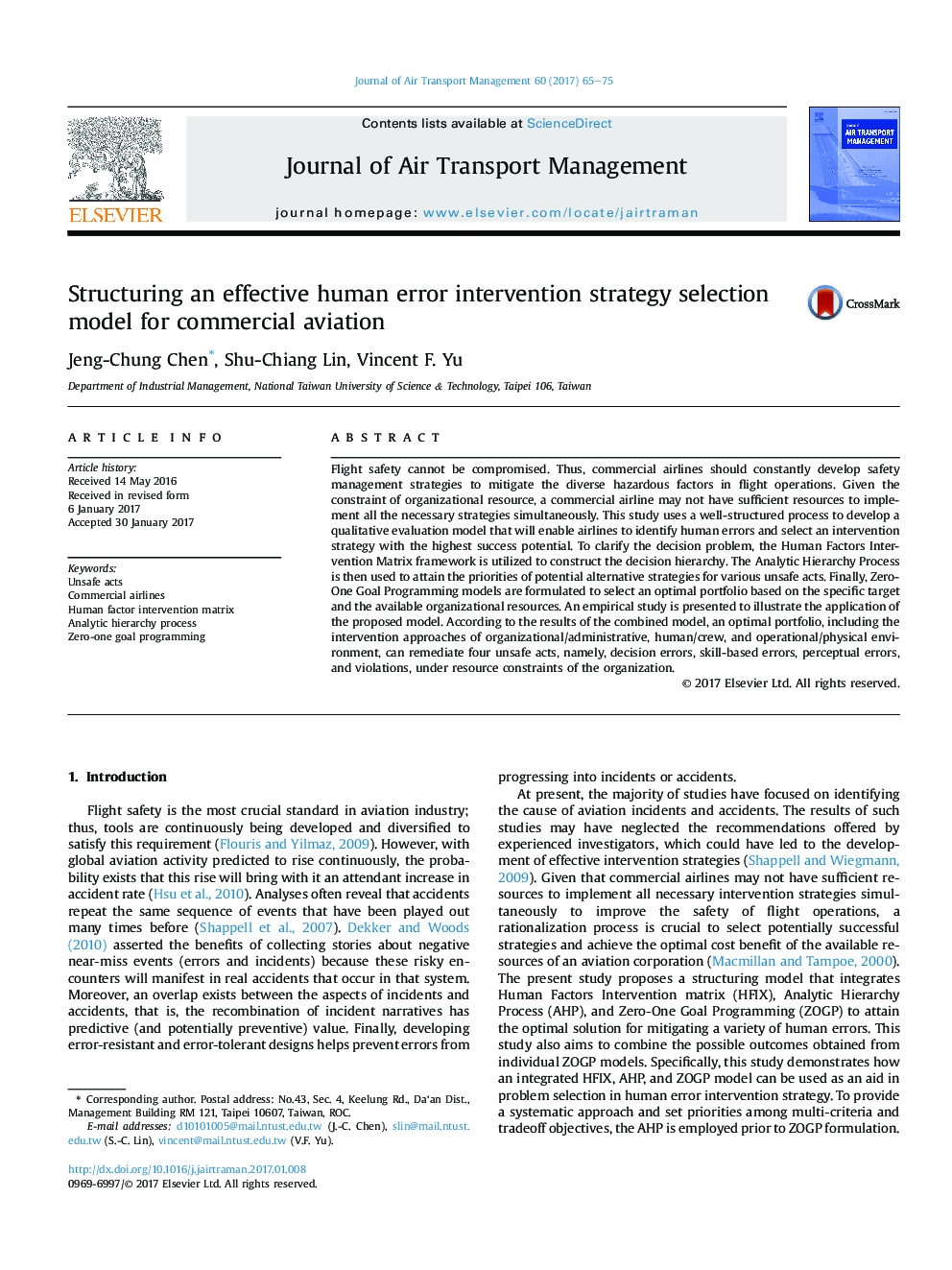| Article ID | Journal | Published Year | Pages | File Type |
|---|---|---|---|---|
| 5111549 | Journal of Air Transport Management | 2017 | 11 Pages |
Abstract
Flight safety cannot be compromised. Thus, commercial airlines should constantly develop safety management strategies to mitigate the diverse hazardous factors in flight operations. Given the constraint of organizational resource, a commercial airline may not have sufficient resources to implement all the necessary strategies simultaneously. This study uses a well-structured process to develop a qualitative evaluation model that will enable airlines to identify human errors and select an intervention strategy with the highest success potential. To clarify the decision problem, the Human Factors Intervention Matrix framework is utilized to construct the decision hierarchy. The Analytic Hierarchy Process is then used to attain the priorities of potential alternative strategies for various unsafe acts. Finally, Zero-One Goal Programming models are formulated to select an optimal portfolio based on the specific target and the available organizational resources. An empirical study is presented to illustrate the application of the proposed model. According to the results of the combined model, an optimal portfolio, including the intervention approaches of organizational/administrative, human/crew, and operational/physical environment, can remediate four unsafe acts, namely, decision errors, skill-based errors, perceptual errors, and violations, under resource constraints of the organization.
Related Topics
Social Sciences and Humanities
Business, Management and Accounting
Strategy and Management
Authors
Jeng-Chung Chen, Shu-Chiang Lin, Vincent F. Yu,
